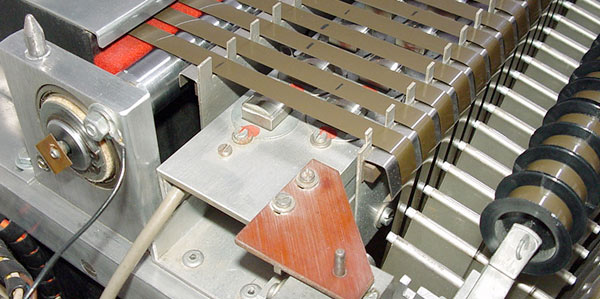Studio Techniques: Re-Miking
Not every sound that makes it into a final mix came through a microphone. In fact, I would venture to say that many, if not most, contemporary pop records contain sounds that never breathed a drop of studio air. These so-called “virtual instruments” are either synthesized approximations of real life instruments or experimental tones concocted by clever computer musicians.
They used to be called samples and the process of capturing an actual instrument was known as sampling. Today virtual instruments come loaded with DAW (digital audio workstations) and other touch pad instruments that produce sounds that are sent directly through wires to a new digital track.
Samplers or virtual instruments are restricted to the digital age. I remember hearing the luxurious “orchestral” style of The Moody Blues and learning about the Mellotron performance instrument that they used to reproduce the sound of real strings, horns, woodwinds and percussion. The Mellotron had dozens of small lengths of analog recording tape that could be triggered by an individual note on a keyboard. The original instrument was “sampled” at each and every note of the chromatic scale and then edited and associated with each trigger note on the keyboard. It was brilliant.
The performer would press down on the notes, the tapes would travel over a set of playback heads and the original recorded note would be playback. With the arrival of digital sampling, the basic idea was the same but the flexibility and reliability greatly improved. If you wanted to emulate horns instead of strings on your Mellotron you had to switch out all of the tapes for the set of tapes containing the string samples. With the early digital samplers you loaded a new library of sounds from a floppy disc…and these days you simply hit a button.
Re-Miking is the process of rerecording (or processing) an individual track or sub mix through a real or virtual acoustic space back onto another track.
Why would anyone want to do that? It does seem counter intuitive but actually is a very commonly used technique. The AIX Records recording of guitarist Carl Verheyen and his band includes the first and only “live” concert that we’ve ever captured. Cliff Hugo played bass with Carl during the concert and it turned out that his bass cabinet had a loose rumble in it that caused an audible distortion…and we didn’t realize it under after the show was over. In listening to the playback of the pair of large diaphragm microphones that I had placed in front of the cabinet, it was obvious that we had a real problem.
Fortunately, my trusty engineer Dominic Robelotto had set up a direct box in addition to the acoustic microphones to capture the output of the bass. This is standard operating procedure especially during concert recording because you want to isolate the mikes from each other and from the ambient sound.
So all we had to do back at the studio was setup Cliff’s bass amplifier and speaker cabinet and re-mic it. The originally recorded tracks from the direct box (without the distortion) were routed back to the bass amp and a new recording captured using the exact microphones that were used during the concert. Obviously, we made sure the rumble was no longer present.
The concept of re-miking is pretty simple. Taken a sound you want altered and send it through a signal path (i.e. a different amplifier) and recapture it. Alternately, take an electrically generated “virtual” sound and process it through a “virtual” room with “virtual” microphones back on to new track.
The creative and sonic options are endless. This is what makes audio engineering so much fun and challenging. It is not merely putting up a microphone and hitting record and play.


You can hear great examples of this re-recording a ‘live’ feed through an amplifier on Frank Zappa’s “Joe’s Garage”.
All the solos were taken from live-recordings and then send through an amplifier in the reverb chamber in Zappa’s studio into a mic to the mixing console. That gave the recordings a great live feeling with this real reverb and not an artificial one.